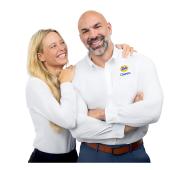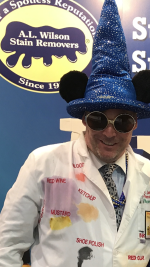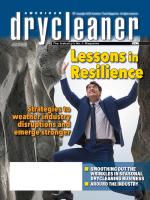Practical Skills for Building Your Drycleaning Business (Conclusion)

WASHINGTON — After establishing solid financial foundations and strategic planning processes, successful drycleaning business owners must master the art of attracting and retaining customers, building relationships with the people who keep their doors open.
“You want to build that loyal customer base,” says Hugh Norton, senior director of financial education at Visa Inc., during his Service Corps of Retired Executives (SCORE) webinar. “Make sure you take time to create a marketing plan and understand the customer first — who are the customers that you’re most likely to get?”
In Part 1 of this series, we explored the financial foundations every drycleaning operation needs. In Part 2, we examined how proper goal-setting and strategic planning can transform a business from reactive to proactive. Today, we’ll conclude by examining ways to create sustainable growth through maintaining customer focus.
Understanding Your Customer Base
Norton challenges drycleaning business owners to think beyond their current customers.
“Maybe your current base isn’t the only customer base you want to have — you want to expand it,” he says. “So, understand the people you want to talk to, and then really create that marketing plan based on what they want.”
This deeper understanding requires research into customer demographics, preferences and pain points. For dry cleaners, this might mean analyzing which services generate the most loyalty, understanding seasonal patterns, or identifying underserved market segments in your area.
The key, Norton believes, is creating marketing messages that resonate with your target audience’s actual needs rather than what you assume they want: “Create a marketing plan based on that.”
Excellence in Customer Service
Norton says he’s found that excellent customer service is fundamental to customer loyalty, and warns against the common pitfalls that can destroy even well-established businesses.
“I’ve talked to a lot of people who’ve had successful businesses,” he says, “but they have trouble with customer service — whether it’s long lead times or missed calls or things like that. Then, that customer base starts to waver.”
For drycleaning operations, customer service excellence might include:
- Consistent turnaround times
- Reliable pickup and delivery schedules
- Prompt response to customer concerns
- Quality control that catches problems before garments are returned
- Clear communication about services and pricing
“Having excellent customer service is really important,” says Norton, noting that poor service can quickly erode customer relationships that took years to build.
Telling Your Story
Beyond operational excellence, successful drycleaning businesses must communicate their value proposition. Norton believes that business owners should “know what your story is. Understand the narrative and understand what resonates with the people you’re talking to.”
Compelling stories might focus on:
- Convenience and reliability for busy professionals
- Expertise in handling delicate or specialty garments
- Community involvement and local business values
The story you tell should align with what your customers value most about your service.
Community Engagement
Norton also believes that active community participation is another pathway to customer loyalty.
“Show up in the community,” he says. “Whether it’s sponsoring events or doing other things — maybe it’s volunteer time from you or from your employees — that support those in the community.”
Community engagement can create multiple ways to connect with potential customers while showing a commitment to the area beyond just business transactions.
“Showing your community that you really care about them will build that loyal customer base over the long course of time,” Norton says.
The Financial Planning Life Cycle
Norton says that financial planning isn’t a one-time activity but an ongoing cycle that supports all other business activities.
The complete financial planning life cycle includes:
- Listing assets and liabilities — Understanding your business’ net worth
- Setting financial goals — Creating specific, measurable targets
- Strategizing — Developing creative approaches to achieve goals
- Formalizing your action plan — Writing down strategies and commitments
- Implementing the plan — Putting strategies into practice
- Reviewing and improving — Continuously adjusting based on results
“The most important part,” Norton says, is “reviewing and improving the plan. There is no good planning. There’s adjusting your plan.”
Putting It All Together
Norton’s eight keys — financial knowledge, product-market fit, well-researched business plans, working with the right people, taking an action-oriented approach, using SMART goals, creating effective processes, and building customer loyalty — work together to create a comprehensive framework for drycleaning business success.
“When you do that in a really intentional way, your business is going to have a much higher rate of success,” Norton says. “And you’re not going to be wondering, ‘What am I doing well? What am I not doing well? Why is this happening?’ Because you’re going to have all those data points.”
For Part 1 of this series, click HERE. For Part 2, click HERE.

Tide Cleaners Opens First-Ever SoCal Locations

Practical Skills for Building Your Drycleaning Business (Part 2)

ZIPS Cleaners Opens New Pennsylvania Location

Practical Skills for Building Your Drycleaning Business (Part 1)

Zengeler Cleaners Completes Multiyear Remodeling, Rebranding Project

Setting Up Google Business Profiles for Drycleaning Operations (Conclusion)

DLI to Offer Drycleaning Webinar, Virtual Courses in July

Setting Up Google Business Profiles for Drycleaning Operations (Part 1)

NFIB Report: Labor Market Remained Weak in May

Smoothing Out the Wrinkles in Seasonal Drycleaning Business (Conclusion)
Podcasts for You
Workplace Violence & Prevention

After a deadly shooting at a textile care facility earlier this year, preventing workplace violence has gained a new focus for many dry cleaners. Carol Dodgen of Dodgen Security Consulting and Jay Juffre from ImageFIRST discuss warning signs, training, prevention and more.
Boiler Sizing and Selection for Dry Cleaners

Learn practical tips on how to choose the right boiler capacity for your drycleaning operation from Mike Leeming, national sales manager with Parker Boiler Company.
Spotting: The How and Why

Learn about the different spotting tools and types of garment stains, along with some "magic words" (tips for spotters) from the Stain Wizard himself Jeff Schwarz, regional vice president for A.L. Wilson Chemical Company.
From the Research Center
Top Trends to Grow Your Business and Customer Loyalty in 2025!

The Complete Spotting Guide & More

Attracting Customers & Increasing Profits—Drycleaning Marketing 101

Latest Digital Editions
Digital EditionAmerican DrycleanerJuly 2025

- Our Clean Show Guide to Orlando 2025
- Brand Power or Autonomy? The Franchise Decision

